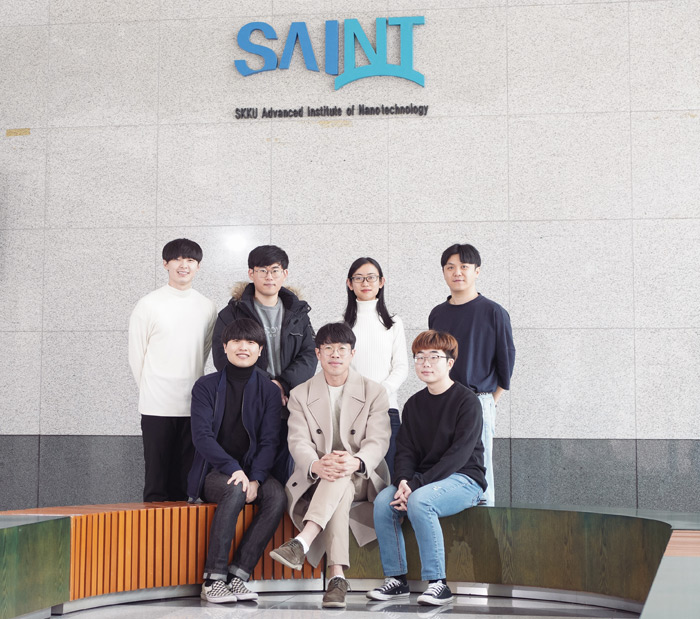Research Stories
Revealing a Clue to the Solution of the Final Piece of the Puzzle Towards Commercialization of Perovskite Optoelectronic
Defect engineering for metal halide perovskite crystals
SKKU Advanced Institute of Nano Technology
Prof.
LEE, JIN WOOK
Prof. Jin-Wook Lee's research team at SKKU Advanced Nano Technology (SAINT) and Department of Nano Engineering has published significant research results to uncover the final piece of the puzzle for the commercialization of perovskite optoelectronic devices. The four research papers associated with it were published in Nature Communications, Advanced Functional Materials, Journal of the American Chemical Society, and Joule (impact index=29.155), the top 2% journal in the material research field.
Optoelectronic devices based on metal halide perovskite materials exhibit performance comparable to those of the commercialized devices, undertaken to be commercialized by domestic and overseas research institutes and companies. In particular, perovskite solar cells are in the limelight as a next-generation solar cell due to power conversion efficiency exceeding 25%, approaching that of previously commercialized silicon solar cells, and are expected to be much economical in manufacturing cost aspect.
The final puzzle for the commercialization of perovskite devices regarding the current issue is the suppression and passivation of crystal defects to improve device lifetime. Low-temperature solution-processed perovskite thin films inevitably possess a high density of ionic defects. These ionic defects are easily migrated under built-in or applied electric field during device operation, degrading the charge transport ability, which ultimately fatal to the device lifetime.
Prof. Jin-wook Lee's research team developed core technologies to dramatically reduce the defect concentration in the perovskite thin-film by applying a solid-phase epitaxial crystal growth method (Nat. Commun., 2020, 11, 5514) and developed a method to effectively passivate defects in the grown thin film without side effects. (Joule, 2020, 4, 2426; Adv. Funct. Mater., 2020, 2007520; J. Am. Chem.Soc. 2020, 142, 20071). The solar cell and LED devices based on thetechnologies showed superior performance and lifetime compared to control devices.
These technologies developed by Professor Jin-wook Lee's research team not only suggested important scientific clues to resolve the instability issue of perovskite photoelectric devices but are also expected to become source proprietary technologies for the commercialization of perovskite optoelectronic devices in the future.
※Related publications
1)Shallow iodine defects accelerate the degradation of α-phase formamidinium perovskite, Joule, 2020, 4, 2426. (Corresponding author- Prof.Jin-Wook Lee)
2)Solid-phase hetero epitaxial growth of α-phase formamidinium perovskite, Nature Communications, 2020, 11, 5514. (First author and corresponding author-Prof. Jin-Wook Lee)
3)Stable and efficient methylammonium, cesium, and bromide-free perovskite solarcells by in-situ interlayer formation, Advanced Functional Materials,2020, 2007520. (Corresponding author- Prof. Jin-Wook Lee)
4)Molecular interaction regulates performance and longevity of defect passivation for metal halide perovskite solar cells, Journal of the American ChemicalSociety, 2020, 142, 20071. (Corresponding author- Prof. Jin-Wook Lee)
Schematic illustration: growth of perovskite thin film by solid-phase epitaxiay
(a) Schematic diagram of a solid-phase epitaxy method using a controlled phase conversion. (b) Comparison of phase conversion kinetics between conventional thin film growth and epitaxial growth methods. (c, d) X-ray diffraction patterns (XRD) and photoluminescence (PL) lifetime of the films grown by a conventional method and nano-heteroepitaxial (NHE) growth method.


